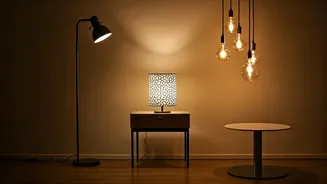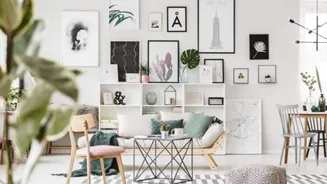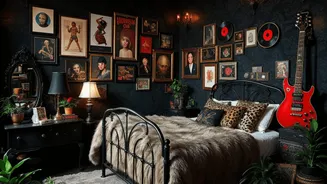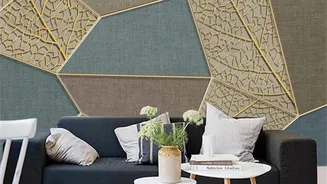Focal Point Functionality
Decorative lamps have the unique capability to serve as a captivating focal point within a room. Their presence grabs attention and draws the eye, instantly
establishing a central theme. Consider a statement lamp with an intriguing design or a unique shape as a conversation starter. Placement is key: position the lamp in a spot that commands attention, such as on a side table or console, near an armchair, or in a hallway. The lamp's size and style should complement the overall decor of the room. A large, ornate lamp can be the centerpiece in a minimalist setting, while a more subdued lamp may work well within a room that already features many design elements. The goal is to balance visual interest and functionality, ensuring the lamp adds both illumination and aesthetic appeal.
Space-Saving Solutions
In today's homes, space is often at a premium, which is where multi-functional lamps shine. These ingenious designs combine lighting with other practical features, maximizing efficiency. For example, a table lamp may feature a built-in USB charging port for phones or other electronic devices, reducing the need for additional outlets and clutter. Floor lamps with integrated shelves or side tables provide surfaces to display decor items or store books, thereby merging lighting and storage solutions. Wall-mounted lamps with adjustable arms are another excellent option, freeing up valuable floor space. Choosing multi-functional lamps is especially beneficial in smaller apartments, studios, or any space where maximizing every inch is a priority. Look for designs that are both stylish and practical, thereby contributing to both your interior design scheme and functionality.
Energy-Efficient Illumination
Sustainability is a core consideration, and energy-efficient lamps play a critical role in reducing environmental impact. Modern LED (Light-Emitting Diode) lamps are a standout choice. LEDs consume significantly less energy than traditional incandescent bulbs, contributing to lower electricity bills and decreasing the carbon footprint. They are available in various styles and color temperatures, allowing flexibility in design and ambiance creation. Furthermore, they boast a longer lifespan, reducing the frequency of replacements and minimizing waste. When selecting energy-efficient lamps, consider the Energy Star certification, which assures the product meets strict efficiency guidelines. Compact fluorescent lamps (CFLs) are another option, although their use has diminished with the growing popularity of LEDs. By integrating energy-efficient lamps into your home decor, you not only improve your space but also actively contribute to a greener planet.
Versatile Adjustment Options
Versatility is another major benefit, and adjustable lamps provide unparalleled control over the lighting environment. These lamps often come with adjustable arms, shades, or heads that allow you to direct light exactly where needed. This feature is particularly useful for tasks like reading, working, or highlighting specific areas in a room. For example, a desk lamp with a flexible arm can be positioned to provide concentrated light on a workspace, minimizing eye strain. Floor lamps with adjustable heights can be modified to suit various needs, and table lamps with dimmer switches allow for fine-tuning the light intensity to match your mood or time of day. Consider your daily needs when choosing adjustable lamps; their adaptability enhances functionality while personalizing the lighting experience. These lamps blend practicality with design, helping you adapt your lighting to meet diverse requirements effortlessly.
Creating Lighting Depth
Layered lighting is an essential technique for creating depth and ambiance. It combines different types of lighting to achieve a harmonious and inviting atmosphere. Layered lighting involves using a combination of ambient lighting (general illumination), task lighting (for specific activities), and accent lighting (to highlight certain features or areas). Decorative lamps can fulfill a role in each of these layers. Use ceiling lights as ambient lighting to provide a general glow, desk lamps as task lighting for working, and decorative lamps to accentuate certain features of the room. The goal is to blend different light sources to eliminate harsh shadows and create a visual hierarchy. The interplay of light and shadow generated through layering brings out textures, colors, and overall depth in a space. This approach allows you to customize the mood of a room, providing options for both functional illumination and decorative purposes.











